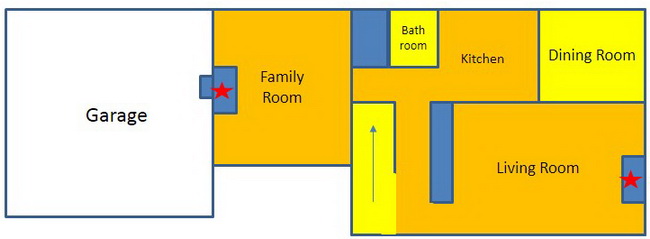Our wood stove is very old technology, and our chimney the same. I wanted to fire up the old stove this year because we have electric heat which is suddenly going to rise sharply. Long story short our existing setup is neither as efficient or as safe as current technology, and the cost to upgrade the chimney is high because before a new liner can go in, the old tile has to come out. A pellet stove vent could fit easily, however.
I'm thinking of doing the vent myself, but I have a couple of probably dumb questions. The best place for a new stove is right where the old one is - on a hearth, with a masonry chimney on the other side of a brick heart back wall, and that chimney is in a garage. So, here come the questions:
1) I've been reading that an outside air kit is always recommended, even when it's not required. As dumb as this sounds, would air from the garage be considered "outside air?" I could run the intake to right where the old cat door is. The cat is long gone. Later, I could hire someone to do a cleaner-looking install through the brick into the garage.
2) I read this article and it scared me. I have no idea whether our current install follows recommended practice. Without tearing down brick, I can't tell what's going on there. I'm guessing that the current installation is hazardous. Can I safely run the pellet stove vent through my 6" pass-through, or do I need to tear that out the bricks and rebuild around the old passthrough according to this article? https://www.hearth.com/econtent/index.php/articles/passing_a_chimney
Once I get out to the old flue, it's a straight shot up to the roof. It looks like it would be dead simple to drop a liner down the chimney, as long as it's less than 6.5" OD.
I'm sure I'll have a million more questions if I move forward with this project, but that's it for now. Doing the vent myself might make it affordable for me to get a lower-cost ($2,000 or less) stove in this year. Otherwise, I may just wait until next year before converting.
Thanks!
Brian
I'm thinking of doing the vent myself, but I have a couple of probably dumb questions. The best place for a new stove is right where the old one is - on a hearth, with a masonry chimney on the other side of a brick heart back wall, and that chimney is in a garage. So, here come the questions:
1) I've been reading that an outside air kit is always recommended, even when it's not required. As dumb as this sounds, would air from the garage be considered "outside air?" I could run the intake to right where the old cat door is. The cat is long gone. Later, I could hire someone to do a cleaner-looking install through the brick into the garage.
2) I read this article and it scared me. I have no idea whether our current install follows recommended practice. Without tearing down brick, I can't tell what's going on there. I'm guessing that the current installation is hazardous. Can I safely run the pellet stove vent through my 6" pass-through, or do I need to tear that out the bricks and rebuild around the old passthrough according to this article? https://www.hearth.com/econtent/index.php/articles/passing_a_chimney
Once I get out to the old flue, it's a straight shot up to the roof. It looks like it would be dead simple to drop a liner down the chimney, as long as it's less than 6.5" OD.
I'm sure I'll have a million more questions if I move forward with this project, but that's it for now. Doing the vent myself might make it affordable for me to get a lower-cost ($2,000 or less) stove in this year. Otherwise, I may just wait until next year before converting.
Thanks!
Brian



